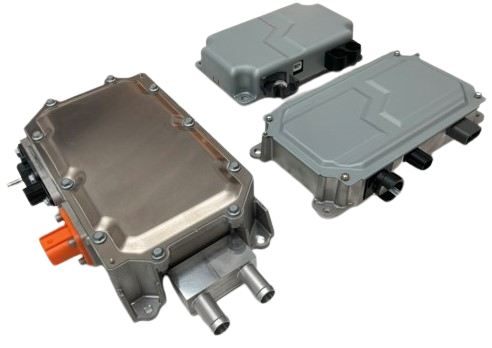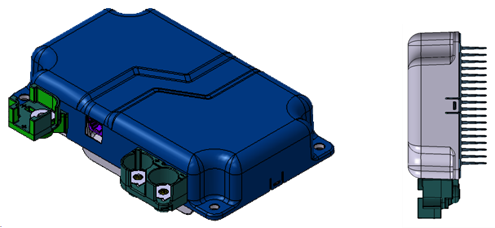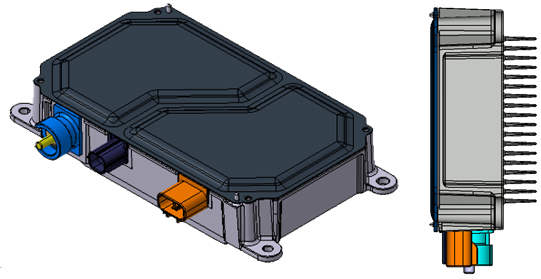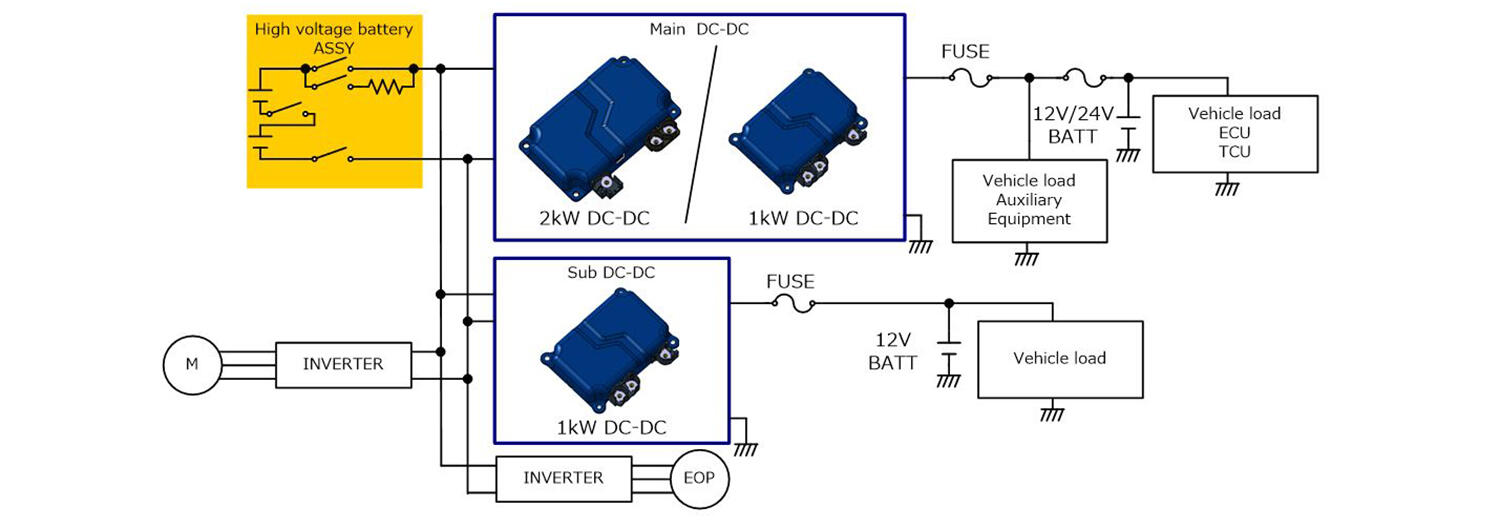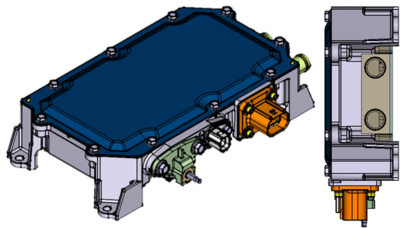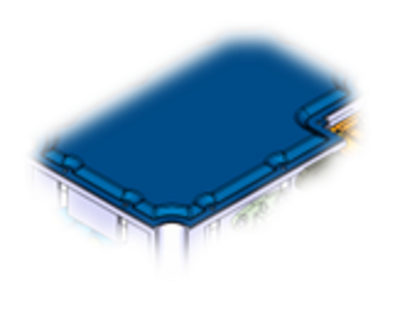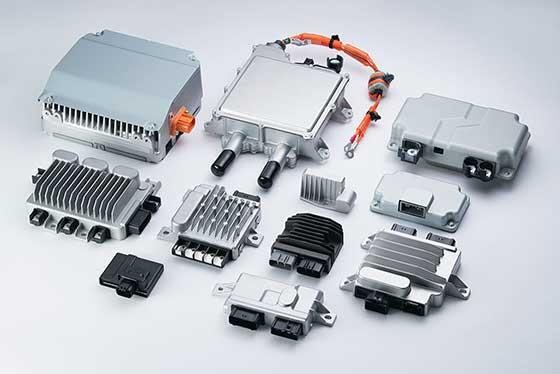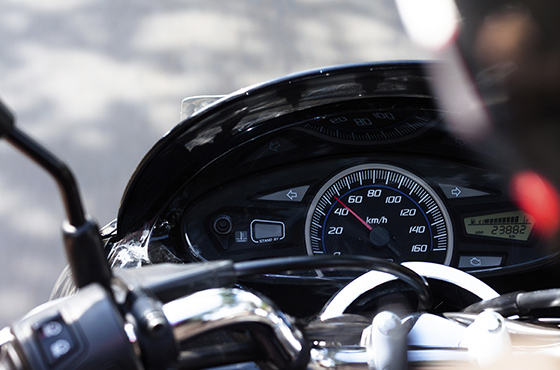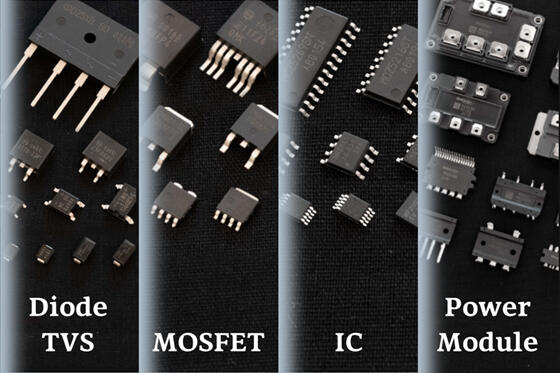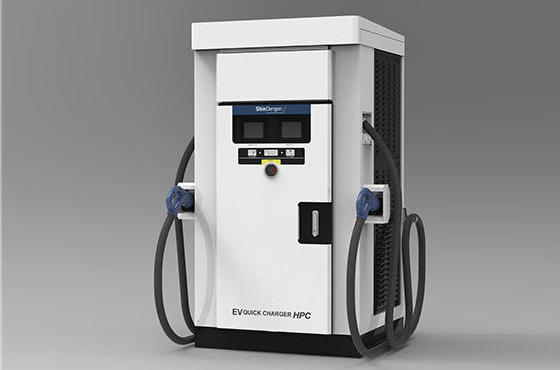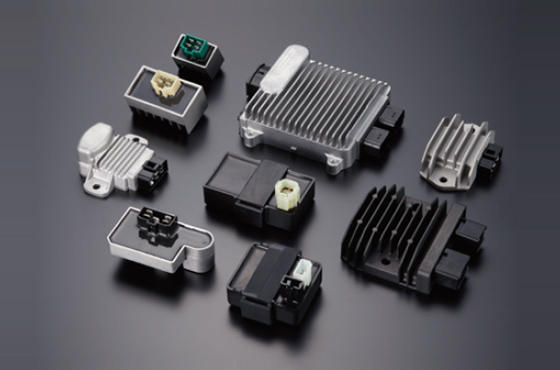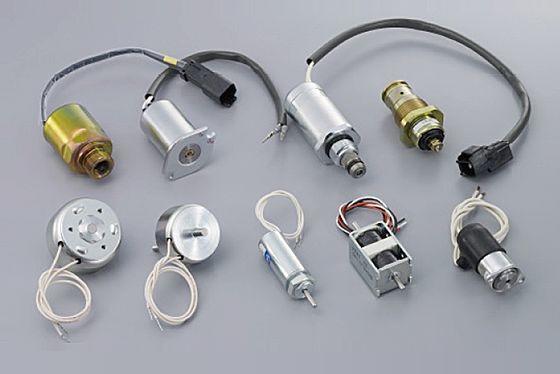Our products for four-wheeled vehicles have achieved reliability that meets in-vehicle requirements by integrating our core technologies such as power semiconductor technology, power module technology, and power circuit technology, in addition to the automotive mounting technology that our electrical components business has cultivated over many years.
In particular, the power semiconductors in the power conversion section employ MOSFETs designed in-house, and the optimal design extends to the bare chip area. We currently provide automotive products for electric vehicles such as HEVs, PHEVs, BEVs, and FCVs that are working towards achieving “carbon neutrality”.
DC/DC converters are isolated converters that step down the voltage of the high-voltage batteries in HEVs, PHEVs, BEVs, and FCVs to the voltage used in car electronics. We have a lineup of cooling systems and waterproof connectors that are tailored to the usage environment.
HEV:
HEV stands for hybrid electric vehicle. These vehicles are equipped with both an internal combustion engine and an electric motor and use gasoline or diesel fuel and a motor as their power source. The internal combustion engine charges the battery and supplies power for the motor drive.
PHEV:
PHEV stands for plug-in hybrid electric vehicle. Like HEVs, they are equipped with both an internal combustion engine and an electric motor, but PHEVs can use an external power source (plug) to charge the battery. This allows the motor to travel longer distances.
BEV:
BEV stands for battery electric vehicle. These vehicles use electricity as their only source of power. They have no internal combustion engine and are equipped with a large-capacity battery. The battery is charged from an external power source.
FCV:
FCV stands for fuel-cell vehicle.
These vehicles use hydrogen fuel cells to produce electricity and run electric motors.
The only by-product discharged in the process is water.
Features
Electric vehicles are equipped with automotive products such as high-voltage batteries, inverters and motors, and due to space constraints, the mounting of components is becoming more and more dense with each generation. Our DC/DC converters employ soft-switching circuitry for low loss and high heat dissipation/heat dispersion technology to reduce size and weight while increasing power capacity. In addition, full digital control using DSP enables optimal power supply control and safety design, and also enables communication with the upper-level ECUs. In addition, a lineup of cooling methods, such as forced air cooling and waterproof water cooling, is available to meet the requirements of the vehicle.
High-voltage input-step-down insulated converters
| Type A | Type B | Type C | Type D | |
| Input voltage | 415V or less | 415V or less | 415V or less | 500V or more |
| Output voltage | 10~15.5V | 10~15.5V | 10~15.5V | 10~15.5V |
| Cooling system | Forced Air cooling | Forced Air cooling |
Water cooling with Water-Jacket |
Water cooling with Water-Jacket |
| Water resistance | Non Waterproof | IP44 equivalent | IP67 equivalent | IP67 equivalent |
*Please inquire the desired input voltage range
Other Automotive DC/DC converters
| Product name |
| High-voltage input DC/DC converters (800V or Higher) |
| Low-voltage input-isolated DC/DC converters (12~60V) |
| Bidirectional converters |
| Step-up converter |
*The above products are under development.If you have any requests,contact us using the inquiry below.
Non water-proof type
| Use | For electric mobility |
|---|
This is an isolated DC/DC converter that converts power from a high-voltage battery to a low-voltage battery system. It is an air-cooled type that is designed to be used in the cabin of a car, etc.
Communication function CAN2.0b, 500kbps
Outline of specifications
The input voltage range for your reference is listed. Please contact us for details.
| Input voltage range |
①180~310V ②240~415V |
|---|---|
| Output voltage range |
12V system : 10 - 15.5V |
| Output current rating | 150A |
| Size |
202×120×39mm *Connectors and fins not included |
| Cooling type | Forced air cooling |
Simple waterproofing Type
| Use | For small mobility |
|---|
An insulated type DC/DC converter which can convert power from high voltage batteries to auxiliary batteries with high efficiency.
Because it is a high capacity product, it can be used as the main converter for electrified vehicles.
Communication function CAN2.0b, 500kbps
Outline of specifications
The input voltage range for your reference is listed. Please contact us for details.
| Input voltage range |
70~ 120V |
|---|---|
| Output voltage range |
12V system : 10 - 15.5V |
| Output current rating | 50A |
| Size |
202×120×39mm *Connectors and fins not included |
| Cooling type |
Forced air cooling |
*System usage examples
Water-proof/water-cooled (With water Jacket) type【Under development】
| Use | For Electric mobility, industrial equipment, etc. |
|---|
Isolated DC/DC converters convert power from high-voltage batteries to low-voltage battery systems.
This product meets the need for waterproofing.
Communication function CAN2.0b, 500kbps
Outline of specifications
The input voltage range for your reference is listed. Please contact us for details.
| Input voltage range |
240~415V |
|---|---|
| Output voltage range | 12V system : 10 - 15.5V |
| Output current rating | 150A |
| Size |
238×145×67mm *Connectors and W/J are not included. |
| Cooling type |
Water cooling with Water-Jacket |
Waterproof/water-cooled (with Water Jacket) type High-voltage input (500V~) type 【Under development】
| Use | For Electric mobility, industrial equipment, etc. |
|---|
This is an isolated DC/DC converter that converts power from high-voltage batteries of 500V or more, which are compatible with rapid charging, to low-voltage battery systems. It is designed to meet the need for waterproofing.
Outline of specifications
Please contact us for details.
| Input voltage range |
500V~ |
|---|---|
| Output voltage range | 12V system : 10 - 15.5V |
| Output current rating | TBD |
| Size |
TBD |
| Cooling type | Water cooling with Water-Jacket |
